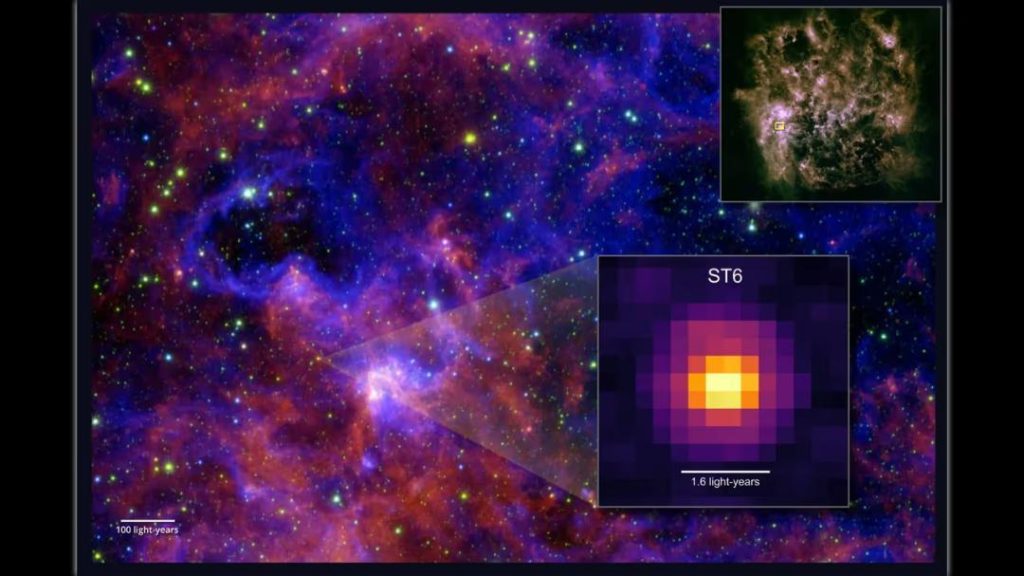
NASA’s Webb finds life’s building blocks in nearby galaxy
The search for life beyond our galaxy has taken a significant leap forward with the latest discovery by NASA’s James Webb Space Telescope. In a groundbreaking finding, the telescope has detected complex organic molecules, including acetic acid, frozen around a young star in the Large Magellanic Cloud. This marks the first detection of such life-linked compounds beyond our galaxy, suggesting that the chemical origins of life may have begun earlier and in harsher cosmic environments.
The Large Magellanic Cloud, a satellite galaxy of the Milky Way, is approximately 160,000 light-years away from Earth. The young star, known as SAO 244567, is surrounded by a protoplanetary disk, a region of space where planets are formed. The James Webb Space Telescope, with its advanced infrared capabilities, was able to penetrate the disk and detect the presence of complex organic molecules, including acetic acid, methyl acetate, and other compounds.
These molecules are considered the building blocks of life, as they can be used to create more complex structures, such as amino acids and sugars, which are essential for life as we know it. The detection of these molecules in a galaxy beyond our own suggests that the raw materials for life are widespread in the universe, and that the conditions for life to emerge may be more common than previously thought.
The discovery was made possible by the James Webb Space Telescope’s advanced spectrographic capabilities, which allow it to analyze the light emitted by objects in space and identify the chemical composition of the molecules present. The telescope’s infrared sensors were able to detect the unique spectral signatures of the complex organic molecules, allowing scientists to identify their presence in the protoplanetary disk.
The implications of this discovery are significant, as they suggest that the chemical origins of life may have begun earlier and in harsher cosmic environments than previously thought. The Large Magellanic Cloud is a relatively small galaxy, with a lower metallicity than the Milky Way, which means that it has fewer heavy elements. The fact that complex organic molecules are present in this galaxy suggests that the raw materials for life can be created in a variety of environments, and that the conditions for life to emerge may be more diverse than previously thought.
The discovery also raises questions about the origins of life on Earth. If the building blocks of life are widespread in the universe, it is possible that life on Earth originated from external sources, such as comets or meteorites, which may have delivered these molecules to our planet. Alternatively, the presence of complex organic molecules in the Large Magellanic Cloud may suggest that life can emerge independently in different environments, and that the origins of life on Earth may be more complex and multifaceted than previously thought.
The James Webb Space Telescope is a powerful tool for studying the origins of life in the universe. Its advanced infrared capabilities and spectrographic instruments make it an ideal instrument for detecting the presence of complex organic molecules in space. The telescope’s ability to penetrate the protoplanetary disk and detect the presence of these molecules in the Large Magellanic Cloud is a testament to its capabilities, and demonstrates the significant contributions that it will make to our understanding of the universe and the origins of life.
In conclusion, the discovery of complex organic molecules in the Large Magellanic Cloud is a significant breakthrough in the search for life beyond our galaxy. The detection of these molecules, including acetic acid, frozen around a young star, suggests that the chemical origins of life may have begun earlier and in harsher cosmic environments than previously thought. The implications of this discovery are far-reaching, and raise important questions about the origins of life on Earth and the possibility of life existing elsewhere in the universe.






